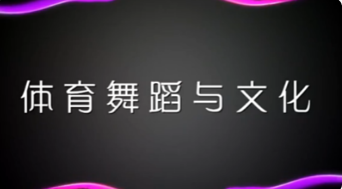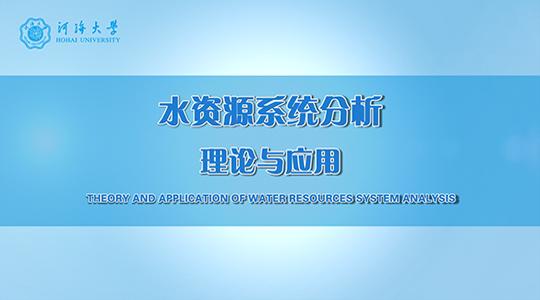
当前课程知识点:山水画技法 > 第七节 笔墨训练方法之五出枝法 > 1.出枝法演示 > Video
同学们好
Hello fellows
我们这一讲是
in this section
我们训练方法的最后一讲
as the last lecture of our training method
这个课程的内容是出枝
The content of this course is the mainly about branch drawing
那么我们练习出枝的目的
the purpose of this training
是训练我们那个
is to practice
用笔的控笔能力
our ability of brush control
这个出枝是比较难的一堂课
This is going to be a difficult lesson
出枝要求很高
Very demanding
不是每个画面
not every image
都能用出枝来作为一个形象
can be use as form in branch drawing
来布局画面的
or to unfolding a painting
我们通过出枝这个训练呢
through this training
可以加强我们的用笔
it can strengthen our ability of brush using
精准的表达和充分的表达
in order to make a more precise and thorough expression
控笔能力更加提高
improve our brush control ability at the same time
墨色的变化
and improve brush-ink performance
包括短枝长枝的组织关系
the relationships in short branch organization
这都是一个线条的组织关系
is a relationship about line organization
难度和强度应该是在
today’s course will be
笔墨训练当中最难的一节课
one of the hardest course in brush-ink training
那么我们这个出枝
so about this branch
也有些课稿
we have some drafts
是供我们学习 同学们临摹的
for study and practice purposes
那么这就是出枝的课稿
here are the drafts
我们从树干往上发展
I will draw from bottom to upper branches
就是出枝就是短枝的
just some short branches
这个布局
in such organization
是多个短线的在一个画面的
it’s a painting that formed with short lines
组织的一个秩序
in certain sequence
这个要求比较难
it’s not easy to achieve
这个往上去的
this moves to the top
这个发展的这个短枝
and here I’m working on this short branch
我们通常把它称为鹿角枝
normally we call it the deer horn style
所以说中国绘画
in Chinese painting
它这个传承很有程序
there always have sequence and roles to follow
也很讲程式
and certain order
那么往下去的这个枝干
the lower branch
我们通常称它是蟹爪枝
we usually call it the crab claw style
它有点像蟹爪
the shape is just like crab claws
所以说我们要求这个枝干
so we say in this branch drawing
控笔的能力要非常强
it requires strong ability of brush control
没有控笔能力
without this ability
是画不了这个
you can’t draw this
短线的这个布局的
look at this group with short line in here
那么我们要求这个枝干
in such short line branch drawing
是什么样的呢
what kind of aesthetic pursuit we are looking for
是这个短线
that will be
短线从起笔到收笔
from start to draw until the end of one brush movement
它有形象的完整的
it always have complete forms
一个充分的表达
with thorough expression
底粗上细 然后起笔收笔
thicker in bottom and thinner at the top, then finish the move
收笔能收得住
the brush movement should be able to be held
收笔不是鼠尾
but don’ t leave it with a rat tail
这叫挑剔鼠尾
here is what rat tail like
这是我们要禁忌的
which is not good
那么我们每笔
each brush movement we made
都要实现这么一个过程
needs to accomplish this process
这是很难的
this is not easy
所以说我们这个
so why we say
在练习的过程当中
during the process of practice
尤其是初学的同学要用狼毫
especially for some beginners who prefer to work with wolf tail brush
首先就是狼毫
the wolf tail brush
这是我们的狼毫
here is one
狼毫这个出枝
the texture and appearance from this type of brush
它这个线比较挺拔
is kind of tough and straight
然后控笔可以协助
hold your wrist
你的腕力比较虚弱
if your wrist is weak
擎不住你那用笔
not able to hold the brush
所以说你那线条出去以后
then it’s impossible to
它那个质量不高
make high quality lines
那么我们用这个狼毫呢
then why choose this wolf tail brush
就可以借助狼毫的这个硬度
because with advantage of this type of fur
它这个不至于使你的笔下塌
the trace of brush will be tough
那么现在我可以
now we can
演示一组出枝的这个布局
demonstrate the organization with this brush
不宜水分太多
not add too much water in it
这个要有墨色变化
also pay attention of ink change
刚才说是笔墨用笔的要求
the requirement of brush movement we mentioned before
但这个墨的要求
but this requirement
也是非常这个严格的
is also very straight
我们从上到下 从左到右
from top to bottom, left to right
这个墨色的变化
the change of ink appearance
包括几株树 两株三株五株
including these trees, here and there
这个五株的墨色的变化
the ink appearance is
应该非常微妙
slightly changing and shifting from each other
而且变化丰富
very flexible and diverse
这才符合我们这个用笔要求
perfectly reflected our brush-ink requirement and aesthetic pursuit
那么一般这个出枝
the branch drawing in here
我们是从左向右 从上到下
normally we draw from left to right, from top to bottom
这么一个循环
in such sequence
但是也有很多人
but many people
从下往上画
also draw in different sequence
那这个这样的人比较少
but very few
所以说我们习惯呢
but the drawing sequence
还是从左往右
normally start from left to right
那么就是
such like this
我们看往上去呢 鹿角
it looks like the shape of deer horn
这个很像鹿角
it’s quite like deer horn
往上去是鹿角
from bottom to top
现在问题我们既要把握
the problem now is that
这么一个出枝的一个要求
the branch should be draw in this certain way
但是我们这个鹿角
but simultaneously
这个鹿角这个形象
we still need to draw in the form of deer horn
往上去的还得把握住
draw it in this way
这是一个出枝的
this is the common aesthetic pursuit
审美态势的普遍的追求
of branch drawing
那么我们要是不是鹿角
if we want to draw other type of branch
我们会呈现什么样呢
what it going to be
比如说呈现一个V字型
for example, in V shape
那个枝干
the branch
不是一长一短的这个变化
isn’t in this different length organization
就很难看
it’s awful
所以说这有个组织的问题
it also involved the organization question
这有个组织一个线条问题
the problem is about line
这个如果都是很平均
if too much evenly placed
那么这个出枝就很难看
then the branch looks boring
就很难看
and awful
所以说我们这个线条的
that’s why we say the line
短线安排
the short lines and longer lines
那么就得寻求这个线的长短
need to be placed interlaced
主次 疏密
with primary and secondary relationship changes
纵横穿插的变化
in different layers
就不能出现这种排列
avoid to draw it in this way
也不能出现这种对等
or too many paralleled lines
所以说古人说往上去的枝干
so when ancient artists do this branch drawing
要出的时候
the way they move brush
就特别像鹿角
is quite like the way deer horn grow up
所以说我们叫鹿角枝
that’s why it’s called deer horn style
那么墨色的变化就在其中
and the ink changes with it
你随着你的笔的逐渐变化
along with your brush moving
你画的一个流程的过程当中
during your drawing process
它那墨就自然产生了
the ink starts to move naturally
很好的变化
like here
那么我们练枝干
in our practice
这个鹿角怎么练呢
how exactly to draw this deer horn style
首先我们要练习控笔能力
the first is you need practice brush control ability
就是我说这个从底往上
from bottom to top
出的这个能力
This ability of brush control
我们一定要训练出
we must be able to move our brush naturally
有这样的一个形状的一个用笔
and feel the movement of the tip
这是顺锋
this is follow tip style
那么我们相反往回出的话
if we go reverse way
这个就比较难
it could be harder
我们还得形成
but still need to form
这个鹿角的姿态
the shape of deer horn
这个用笔的形象不能改变
The image of this brush cannot be changed
所以说这个就得入笔细
That’s why I’m engaging with the very top of brush tip
回笔到根部是得粗
the bottom of brush is much thicker when move back
所以说我们就得习惯
So we have to get used to it
就得练这个控笔能力
get used to this movement in practice
这是两个方向的出笔
This is a brush stroke in two directions
和入笔的形状的把控
and the shape of brush engaging control
这个把控我们是通过练习
this ability can only gain through practice
才能得到
practice after practice
所以说这个
so like
我们以前学过披麻皴
previously we learned “Pima” Cun
那是一个短线皴
it’s combined with short line
感觉还相对容易
seems easy
可是到了这一个
But this one here
更为短线的出枝的
is formed with even shorter lines
这么一个形象的用笔
to make such form
这个难度就上来了
it’s getting harder
你在出枝上是非常熟练了
when you are doing very well in branch drawing
已经变成下意识了
Has became your subconscious
而且你这个用笔的形状
and the shape of your brush stroke
没有改变
stays very well
在出枝的时候才能有神采
that’s how to draw the spirit of an object
关于这个枝干的组织形式
About the organization of this branch
怎么训练呢
how to practice it
这个我建议就是
my suggestion is
不一定用毛笔 用铅笔
Not necessarily with a brush, you can even choose a pencil
看看古人出枝
Look at the ancients works
包括我们的课稿
including our draft
这个怎么一个组织
How was it organized
才是一个很好的
what is ideal
一个态势关系
tendency relationship
就是这些短线在一起
these intercrossed short lines
非常协调还有变化
well coordinated and flexible
看看我们的课稿
Check out our drafts
包括古人的山水画
ancients landscape paintings
在古人的山水画
in their paintings
唐寅在出枝上
for example, in Tang Yin’s work
是最过关的一个画家
he’s one of the best artist
看看他那个局部的出枝功力
Look at his partial branching skills
包括他那个组织态势
including his organizational situation
非常的绝妙
Very wonderful
这是往上去的鹿角枝
here is the deer horn branch that goes up
下边我再演示往下去的
I will demonstrate another that goes down
叫蟹爪
Which is called Crab Claw style
这个蟹爪的基本的笔法就是
The basic drawing method of this crab claw is like here
非常形象
very close to the shape of crab claw shape
那么往下去的这个蟹爪
by drawing this style
我们也得练它的基本的
we also need to practice it basics
用笔的这个把控能力
brush control ability
就是我们始终得把握到
that is, we always need move our brush
这样一个用笔
in this sequence
方向
and direction
就是快慢
it’s speed
这个线能控制住
remain the quality of the lines
然后不臃肿 这个有弹力
avoid to be fat, remain the tension inside
肯定 霸气 充分
Affirmative domineering
这是用笔的要求
This is the requirement of brush using
完了墨色变化
in ink using section
难的也是这个短线的组织
the most difficult part is also this short-term organization part
下面我来画一下那个
let me draw it next
蟹爪的这个使用的方法
The method of crab claws style drawing
这个蟹爪用笔的方式
and the method of brush using
其实比这个鹿角
is even more difficult than deer horn style
可能还要难一些
It may be harder
因为它是往下这个发展的
because it is growing in this way
那么我们在控制笔型的时候
then when we hold the brush
要比往上顺锋要难一些
it’s more inconvenient
那个起手也是 把墨调好
so as the beginning of brush movement, mix ink and water
可以从某一处
you can start from somewhere
大概习惯还是从左向右
normally we do it from left to right
这都是练蟹爪的笔法
here it is
这是往下去的控笔能力
this is how we draw it
这是两种出枝的
This is two type of branch drawing style
这个方向不同
the direction is different
还有角度不同
and different angles
角度不同就是我们介绍
I’ll introduce three different angles
三种角度
in these three angles
一种角度是90度
one is 90 degrees
我们看龚贤
for example, in Gong Xian’s art pieces
龚贤的山水
especially his landscape painting
这个90度出枝比较多
it’s quite common to see branches in 90 degrees
一种是45度
another one is in angle of 45 degrees
45度一般就是鹿角枝
which is the deer horn style
一种是大于90度
the other one is above 90 degrees
那就是往下出枝的可能性
then it’s more likely to be the branches that move downwards
就比较大
possibly
大于90度
greater than 90 degrees
这都是我们常遇到的
this is common situation in landscape painting making
应该注意的过程
and what we need to pay attention to
那么出枝的演示就到这里
now it’s today’s demonstration
-1.中国山水画的理想追求与表达
--Video
-课程作业--作业
-1.笔墨概念与材料介绍
--Video
-2.笔墨基础技法
--Video
-3.笔墨表达的一般程序
--Video
-第二节 笔墨概念和材料--课程作业
-1.披麻皴技法演示
--Video
-2.披麻皴作业点评
--Video
-3.画面调整
--Video
-第三节 笔墨训练方法之一披麻皴--课程作业
-1.牛毛皴技法演示
--Video
-2.牛毛皴作业点评
--Video
-3.画面调整
--Video
-课程作业--作业
-1.斧劈皴技法演示
--Video
-2.斧劈皴作业点评
--Video
-3.画面调整
--Video
-课程作业--作业
-1.树干及点叶法演示
--Video
-2.树干及点叶作业点评
--Video
-3.画面调整
--Video
-课程作业--作业
-1.出枝法演示
--Video
-2.出枝法作业点评
--Video
-3.画面调整
--Video
-课程作业--作业
-期末临摹作业
-期末主观论述题







